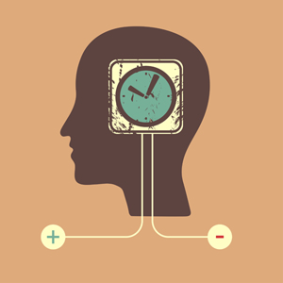
Image: Shutterstock
This year’s Nobel Prize in Physiology and Medicine was awarded to three men who did basic research, discovering molecular mechanisms that control the circadian rhythm. The discoveries by Jeffrey C. Hall, Michael Rosbash and Michael W. Young “explain how plants, animals and humans adapt their biological rhythm so that it is synchronized with the Earth’s revolutions,” write the Nobel committee.
They and other researchers have continued to add details to our understanding of this critical system. In a story for Cerebrum in 2014, Paolo Sassone-Corsi described two relatively new areas of research: circadian genomics and epigenomics:
The unexpectedly high proportion of circadian transcripts suggests that the clock machinery may direct widespread events of cyclic chromatin remodeling, which is the dynamic modification of chromatin architecture to allow access of condensed genomic DNA. This consequently affects the cycles of transcriptional activation and repression. Remarkably, a recent analysis covering types of mouse tissues identified approximately 10,000 known genes showing circadian oscillations in at least one tissue.
These findings underscore the presence of molecular interplays between the core clockwork, which can be assumed to be common to all tissues, and cell-specific transcriptional systems. Taking into consideration the recent view of the mammalian circadian clock as a transcriptional network, through which the oscillator acquires plasticity and robustness, it is reasonable to speculate that the clock network contributes to physiological responses by intersecting with cell-specific transcriptional pathways.
Considering the thousands of genes regulated in a circadian manner, researchers have questioned how the complex organization of chromatin copes with the task of controlling harmonic oscillations. A number of studies have revealed that several chromatin dynamics contribute to circadian function, rendering specific genomic loci either active (open) or silenced (closed) for transcription.Specifically, we have found that the clock machinery is itself essential for circadian control of chromatin dynamics.
In our Cerebrum story from this past June, Chiara Cirelli and Giulio Tononi focus on the clock’s effects on sleep and learning:
The default assumption among neuroscientists has been that synaptic homeostasis is maintained during learning itself, when the brain is online. SHY [the Synaptic Homeostasis Hypothesis], instead, proposes that synaptic renormalization should not happen during waking, when we are at the mercy of a particular environment and slaves of the “here and now,” but during sleep, when the brain is offline. Freed from the tyranny of its immediate environment, the brain can sample all its memories—old and new—and renormalize the total amount of synaptic strength in a smart way, preserving and consolidating those newly formed memory traces that fit best with its overall knowledge basis, while forgetting those that fit less well. Thus, sleep should be a time for net synaptic depression, leading to optimal “down-selection” of memory traces.
[We also have a podcast Q&A with Chiara Cirelli on her work and sleep in general]
Freelance writer Dirk Hanson reviewed the neuroscience of bedtime for us, finding that when we can choose when to sleep, “larks” (early risers) or “owls” (people who stay up late) report less trouble sleeping. Society’s schedules and work schedules don’t always accord with our own rhythms, though, and that’s where the trouble lies.
Our intrinsic 24-hour clock mechanism resides in the brain’s suprachiasmatic nucleus (SCN), a set of neuron clusters in the hypothalamus that receive input from the retina via the optic nerve. Via phototransduction, the amount of light captured by the brain is translated into electrical signals. This system evolved to allow early life forms to accurately peg light and dark cycles caused by the rising and setting of the sun. The SCN also controls the synthesis of melatonin in the pineal gland, a crucial component of wake/sleep cycles. Both larks and owls inherit variations of these genetically determined behaviors that produce something very much like jet lag without the plane ride. Clock-dependent alertness pathways in the brain stay activated later at night in the owls, and give out earlier in the larks. Peak performance times, body temperature cycles, and hormonal rhythms are all canted away from the norm in people with sleep phase disorders…
The body clock also helps establish our eating cycles, body weight, and glucose levels. Circadian misalignment results in “a decrease in leptin, increase in glucose and insulin, increase in mean arterial blood pressure, and reduced sleep efficiency” according to Frank Scheer and coworkers who authored the PNAS study. Scheer adds that people with disordered body clocks also show mild hypertension, “indicating that over the long term, cumulative cardiovascular risk may increase as a result of circadian misalignment.
– Nicky Penttila
Share this:





